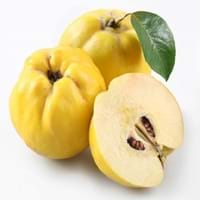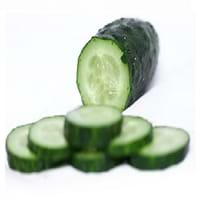Health Benefits
Cancer prevention, Cures gastro-intestinal troubles, Reduces nervous tension, Ulcer prevention
Arthritis treatment, Cancer prevention, Eczema treatment, Increases metabolic rate, Kidney stone treatment, Prevents constipation, Removes toxic metals, Treatment of alzheimer's disease
General Benefits
Anti oxidant properties, Anti-inflammatory properties, Boosts immune system, Controls blood pressure, Digestive aid, Eye care, Helps in weight loss, Improves blood circulation, Maintains healthy cholesterol level
Anti oxidant properties, Anti-inflammatory properties, Controls blood pressure, Digestive aid, Strengthens bones, Treatment of sore eyes
Skin Benefits
Anti-aging benefits, Reduces wrinkles
Heals sunburn, Hydrates skin, Skin rejuvenation, Skin revitalization, Treatment of dark spots, Treatment of skin diseases
Hair Benefits
Regulates hair growth
Promotes longer and healthier hair, Protects hair, Regulates hair growth, Shiny hair
Allergy Symptoms
NA
Breathing difficulty, Decrease in blood pressure, Diarrhea, Itching, Red rash, Runny nose, Sneezing, Vomiting, Watery eyes
Side Effects
Allergic reaction
Stressed heart, Irritation, Swelling, Swelling around mouth, Throat swelling, Tongue swelling, Strained blood vessels
Lactating Women
Yes
Not Available
Best Time to Eat
As a snack in the late afternoon, Don't consume at night and before bed, Eat the fresh ones, avoid mixing with any other foods, don't eat after meal., Morning time (before lunch)
Along with meal, As a snack in the late afternoon, Eat the fresh ones, avoid mixing with any other foods, don't eat after meal., Strictly avoid empty stomach
Vitamin B5 (Pantothenic Acid)
Vitamin C (Ascorbic Acid)
Vitamin E (Tocopherole)
Not Available
Vitamin K (Phyllochinone)
Not Available
Lutein+Zeaxanthin
Not Available
Phytosterol
Not Available
Calories in Fresh Fruit with Peel
Calories in Fresh Fruit without Peel
Not Available
Calories in Frozen Form
Not Available
Not Available
Calories in Dried Form
Not Available
Calories in Canned Form
Not Available
Not Available
Calories in Juice
Not Available
Calories in Jam
Not Available
Calories in Pie
Not Available
Type
Tree fruit
Fruit vegetable, Melon
Season
Winter
Spring, Summer
Varieties
Meech’s Prolific, Lusitanica, Champion and Vranja AGM
Armenian, English, Garden, Kirby, Lemon and Persian
Color
Green, Yellow
Dark green, Green
Origin
Iran, South-West Asia, Turkey
India
Soil Type
Loam, Well-drained
Loam
Climatic Conditions
Warm
Warm
Facts about
- Due to its strong & fruity aroma, brides consumed quince to ensure "perfumed lips".
- It is also called as ‘Pear of Cydonia’, being native to Caucasus and Iran.
- They call it as the ‘golden apple’ of Greek Mythology.
- Outer waxy coating of cucumber can erase the pen writing.
- Pressing cucumber on roof of mouth for 30 sec will eliminate bad breath.
- It is made up of 96% water.
- English cucumber can grow longer than 2 feet.
Top Producer
Turkey
China
Other Countries
Algeria, Argentina, Azerbaijan, China, Iran, Morocco, Serbia, Spain, Uzbekistan
Egypt, Indonesia, Iran, Japan, Russia, Spain, Turkey, Ukraine, United States of America
Top Importer
United States of America
France
Top Exporter
Argentina
Spain
Botanical Name
Cydonia oblonga
Cucumis sativus
Synonym
C. vulgaris
Not Available
Subkingdom
Tracheobionta
Tracheobionta
Division
Magnoliophyta
Magnoliophyta
Class
Magnoliopsida
Magnoliopsida
Subclass
Rosidae
Dillenhidae
Order
Rosales
Cucurbitales
Family
Rosaceae
Cucurbitaceae
Species
C. oblonga
C. sativus
Generic Group
Rose
Not Available
Difference Between Quince and Cucumber
We might think that Quince and Cucumber are similar with respect to nutritional value and health benefits. But the nutrient content of both fruits is different. Quince and Cucumber Facts such as their taste, shape, color, and size are also distinct. The difference between Quince and Cucumber is explained here.
The amount of calories in 100 gm of fresh Quince and Cucumber with peel is 57.00 kcal and 15.00 kcal and the amount of calories without peel is Not Available and 12.00 kcal respectively. Thus, Quince and Cucumber belong to Low Calorie Fruits and Low Calorie Fruits category.These fruits might or might not differ with respect to their scientific classification. The order of Quince and Cucumber is Rosales and Cucurbitales respectively. Quince belongs to Rosaceae family and Cucumber belongs to Cucurbitaceae family. Quince belongs to Cydonia genus of C. oblonga species and Cucumber belongs to Cucumis genus of C. sativus species. Beings plants, both fruits belong to Plantae Kingdom.









